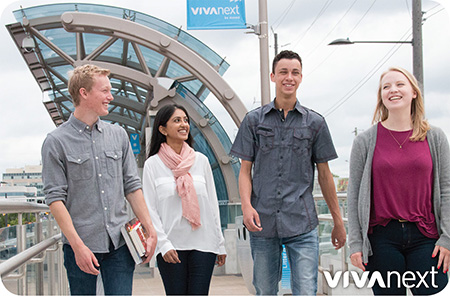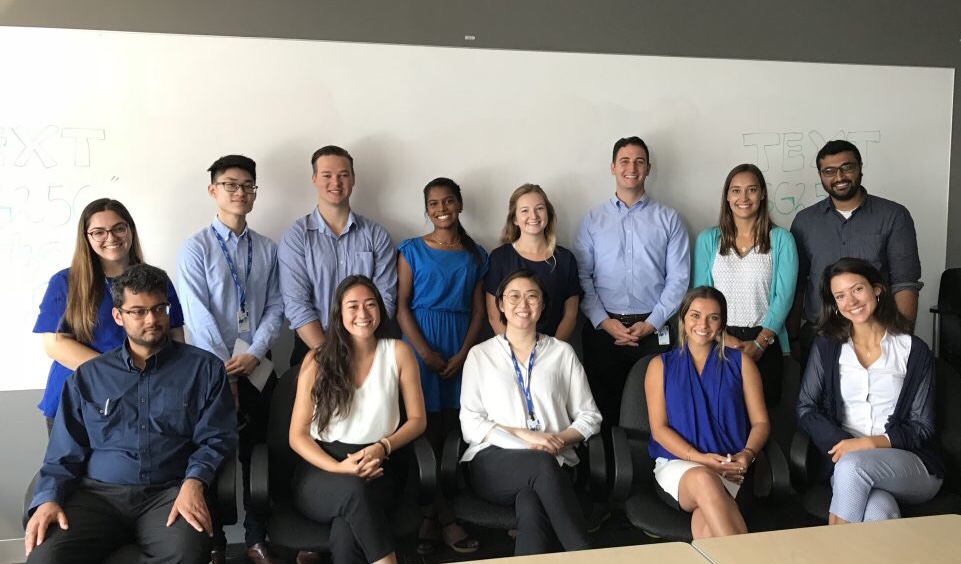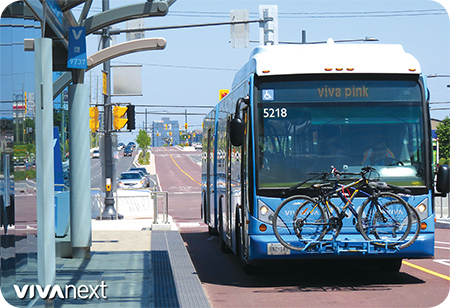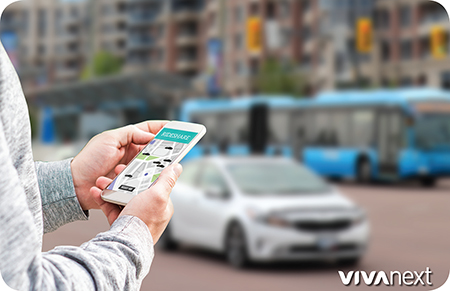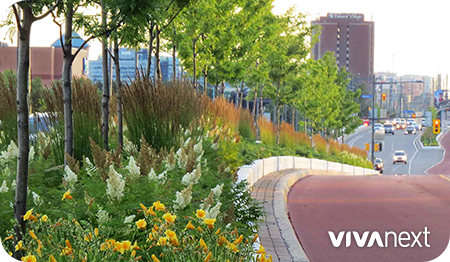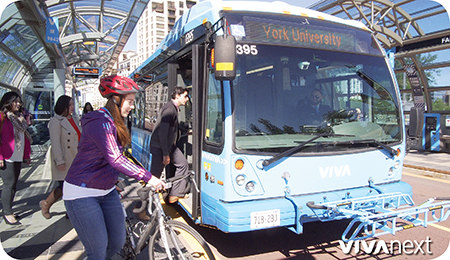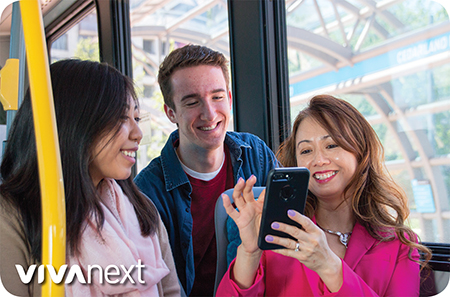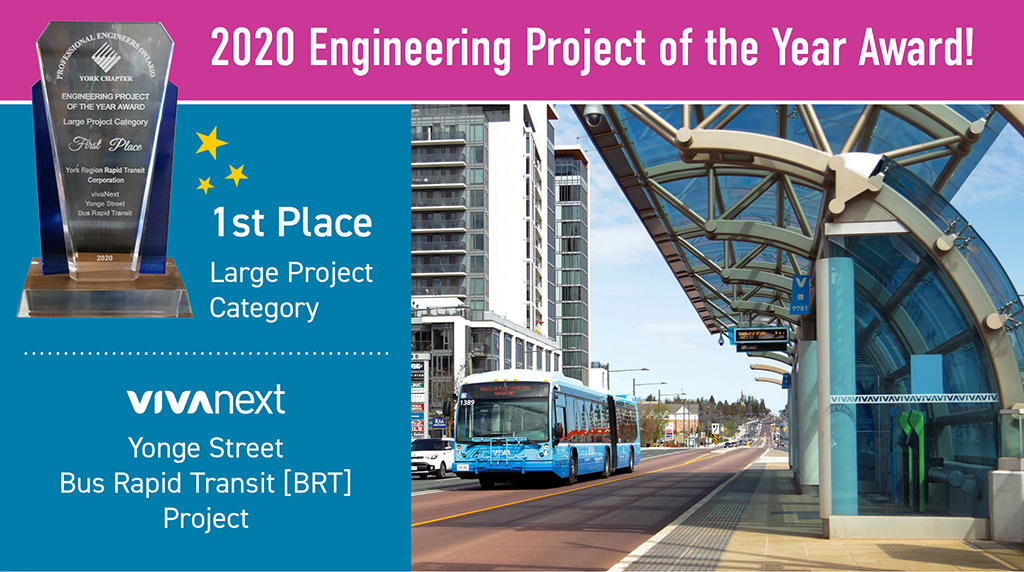
We recently shared the good news that YRRTC was recognized for multiple AVA Digital Awards, and we’re thrilled to share more exciting news…
The Yonge Street bus rapid transit project that opened for service last year in Richmond Hill and Newmarket was recently awarded first place in the Large Project category for the 2020 Engineering Project of the Year Award from the Professional Engineers Ontario [PEO] – York Chapter.
- This competition recognizes the contributions to the engineering profession and local community by an organization that has completed an outstanding project of a technical nature within the past year. It’s no secret that rapid transit projects bring better options for fast and convenient travel, but they also include major upgrades to roads above and below the ground. This includes updated utilities and infrastructure and beautiful streetscapes for pedestrians and cyclists – benefitting communities for generations to come.
- EllisDon Capital Inc. and Coco Paving Inc. (EDCO), YRRTC’s constructor, also came in 2nd place for the Highway 7 West and Bathurst & Centre rapidway projects in Vaughan.
- Both rapid transit projects were recognized as the top winners in the Large Project category for the 2020 Engineering Project of the Year Award, highlighting the important investment made in rapid transit infrastructure.
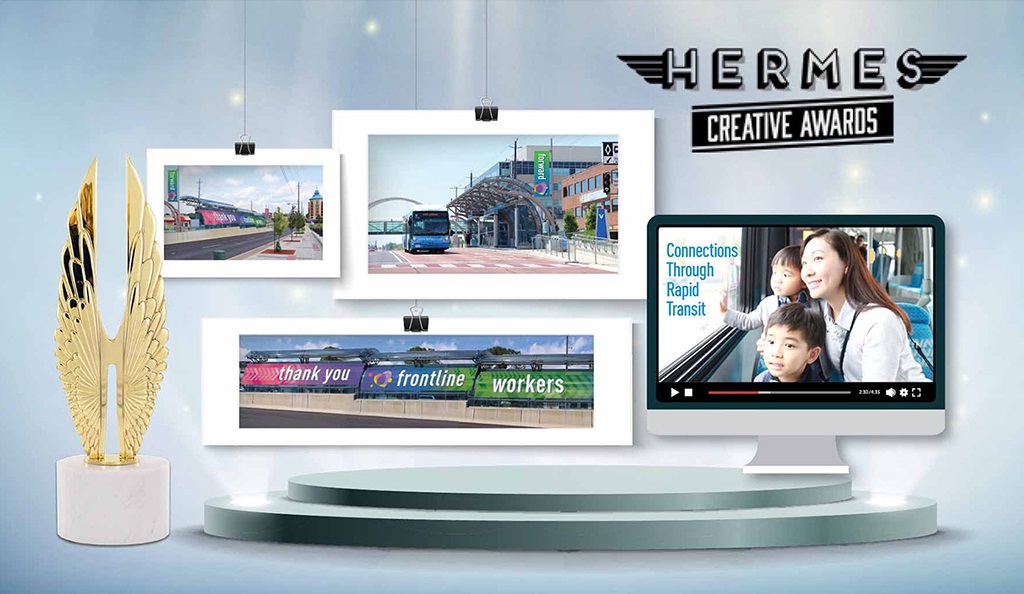
We’re also pleased to share that a number of communications pieces have received awards from the Hermes Creative Awards – an international competition that recognizes excellence by creative professionals. Judged by the Association of Marketing and Communication Professionals (AMCP), YRRTC was awarded:
- Platinum Award for YRRTC Incident Management Protocol – Public Relations/Communications | Strategic Programs | Crisis Communications Plan
- Gold Award for Connections Through Rapid Transit video – Electronic Media/Social Media/Interactive Media | Video | Government
- Gold Award for Support Local campaign – Public Relations/Communications | Strategic Programs | Pandemic Response
We’re thankful to have our commitment to excellence recognized by top industry professionals. None of this would have been possible without the dedication of staff and partners alike to deliver on the transit vision that is transforming communities. For more info, visit our awards & recognition webpage.



